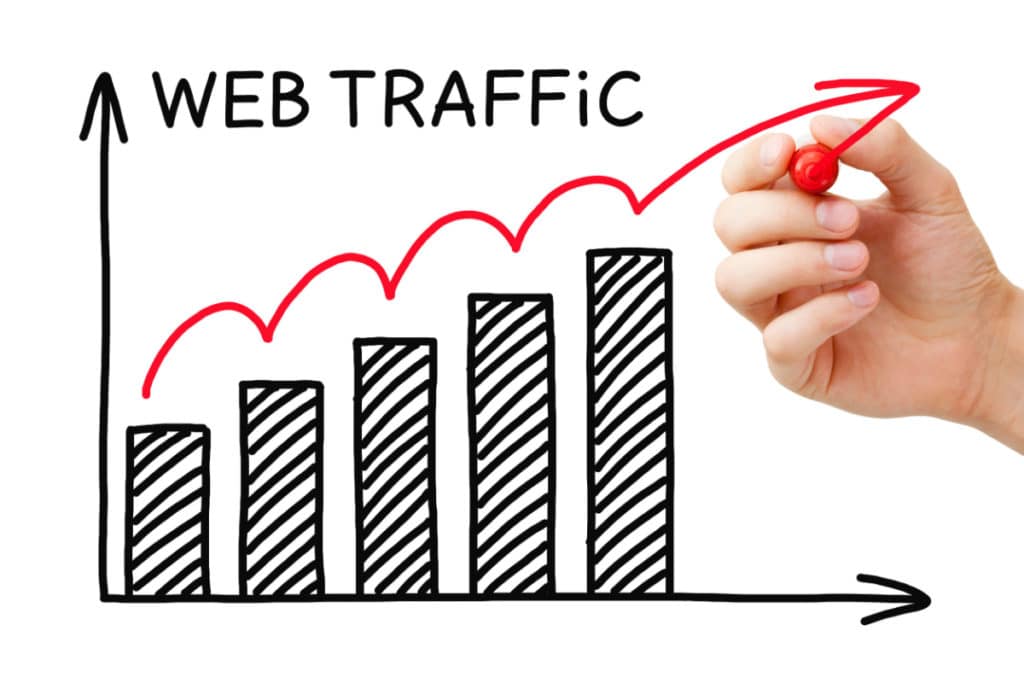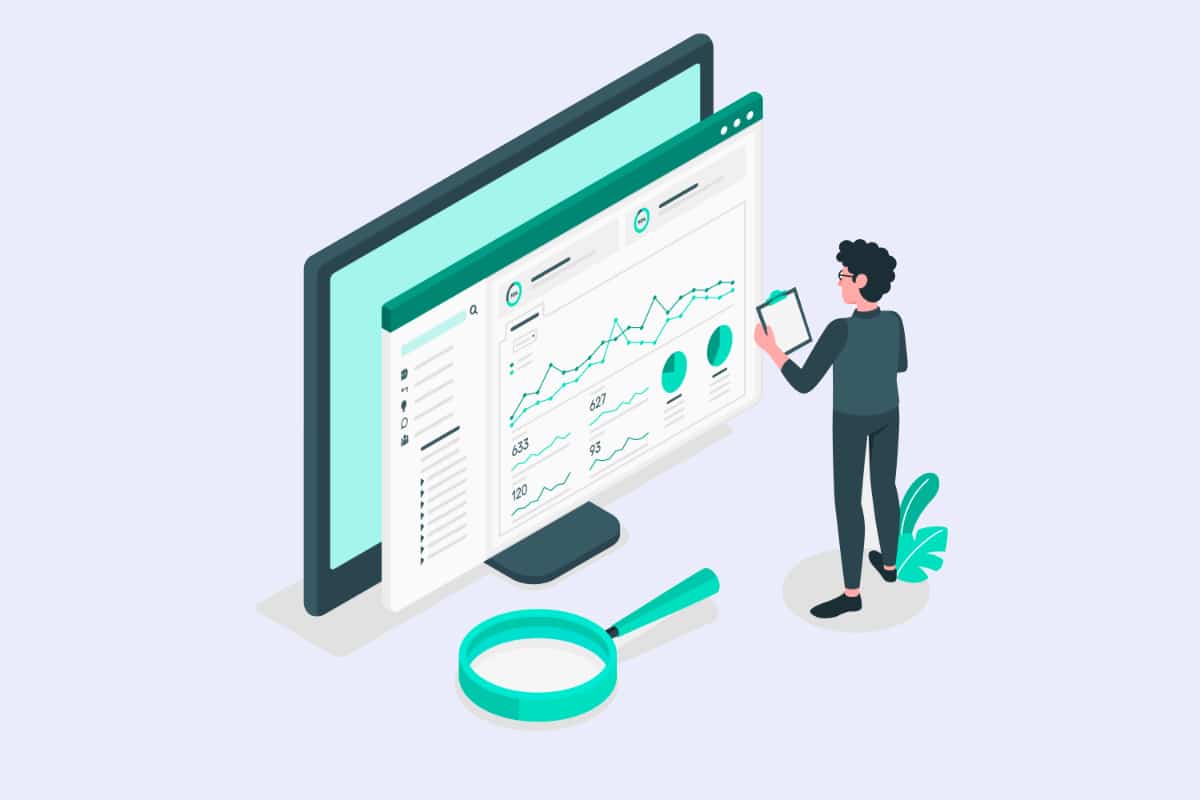The term " performance " combines a variety of factors. A high-performance website meets a series of qualitative criteria: speed of loading, relevance of information, attractive visuals and internal and external interactivity. These factors maintain the technical aspect and SEO potential of your site. They also contribute to the improvement of the user experience. So how do you achieve these results? In these paragraphs, we will show you 13 tips for optimising the performance of your website.
Solutions for optimising the technical performance of your website
The technical aspect reveals the backstage of your website, i.e. its backoffice.
1- Use a CMS
The Internet is full oftools for creating websites of all kinds. It is true that the automation of tasks speeds up the process. However, they do not provide access to the back office.
The CMS (Content Management System) remains the best instrument for establishing a complete and functional website. The platform provides you with the essential tools to set it up. Its use ensures its long-term optimisation.
In addition, the CMS reinforces thearchitecture of your site. It introduces you to its folder system consisting of several directories (such as the categories content, admin and includes). Each category has a specific task.
The CMS is paired with plugins, which are necessary for the proper functioning of the site and the improvement of your online business.
2- Select the right host
Thehost or hosting company plays a decisive role in the performance of the site. As a reminder, its role is to provide a storage space that will house the future website. The space provided is called a server in digital jargon. Blue Host, OVH and HostGator remain the masters of the hosting market.
Start-ups and projects with limited budgets tend to flock to cheap hosting offers. However, the attractive packages hide flaws that can affect the performance of your site: slow loading and limited storage space.
There are several criteria to consider when choosing a web host: their reputation, your digital budget and the packages available. Between cheap and premium offers, choose the middle ground. Whenever possible, opt for cloud servers that offer flexible and scalable packages on demand.
3- Install the right plugins
Plugins are proprietary programs that add functionality to the CMS system. As a rule, a CMS allows up to 50 plugins. The number of installed plugins depends partly on your storage space and the size of the tool. Too many plugins reduce the performance of your site.
Moderation is therefore your watchword. Eradicate unused plugins that take up space from your dashboard. Don't spare extensions that could disrupt your website or those that are impossible to update.
4- Optimising the database
The cleaning and reformulation of the codes reflect the database optimisation procedures.
In addition, the addition of extensions, themes and modules develops residual code in your source code. These elements persist even after the computer program in question has been uninstalled. This is how a residue repository clutters your code, which is why it is important to optimise your database.
If you don't have any knowledge in the field, ask a developer to help you with this. At the same time, take advantage of the clean-up to reduce the HTML/CSS code of your site to the strict minimum. The browser's reading of the coded version of the page increases the display speed. A short and correct code loads in a few seconds on the screen, unlike a long code.
5- Using the cache
The cache is an intermediate memory system. Its primary mission is to temporarily store on the visitor's hard disk static files of your pages, in this case, the data consulted on your site. The files will later be reused. Their reuse reduces the number of server requests and therefore the loading time.
With the Wordpress CMS, the W3 Total Cache and WP rocket cache systems make it easy to set up the cache. However, be careful with their configuration. Incorrect handling will lead to side effects. A test and a performance check should follow each setting of the plugins.

6- Using CDN
The CDN (Content Delivery Network) is an often underestimated parameter. Its mechanism is simple: rather than loading all the elements of a page from a single server, it relies on a network of servers located in different data centres around the world. The technique is similar to a local redistribution of content in addition to caching your website on several servers.
The trick emerges a major advantage on the side of the Internet user. Knowing that the distance between the server and the user influences the loading time, the CDN delivers cached pages from several servers more or less close to the Internet user. It brings forward the loading time. Moreover, the service failures of the hosting companies do not alter the functionality of the site. It remains active as long as a server is working.
7- Reduce HTTP requests
Numerous HTTP requests slow down the performance of web pages, as they develop large files that crowd your database. Reducing HTTP requests is therefore crucial. The operation involves reducing as much unnecessary content as possible: images, style sheets, Flash, etc., especially as each of these elements calls for different requests. The technique requires a sharp knowledge of HTML language. A helping hand from an expert is therefore welcome.
Before attempting to reduce the price, check the pages that require it using your Chrome browser. To do this, right click on the page and choose "inspect". In the "network" tab, you will see the columns "Name", "Size" and "Time". "Name" shows the files on the page. "Size" shows the size of each file and "Time" shows the loading time. The bottom left corner shows the total number of requests made.
Techniques for optimising the SEO performance of your website
A strong SEO potential is a guarantee of performance. The next step is to focus your attention on the visual aspect and content of your website.
8- Select the right theme
The theme promotes the visual design of your website. Site owners are tempted by the most popular theme. However, a popular template is not necessarily a high-performance template. Better performance requires a lightweight template with a simple design.
Others are attracted by the special effects, while others are attracted by the gas-factory and ultra-sophisticated themes. Avoid templates adorned with 40 sliders and animations in all directions (Facebook feeds, Google Maps, 3D animations). Their presence increases the loading time. Special effects use JavaScript, a language that, if overused, will slow down loading.
Also read: How to choose your Wordpress theme?
9- Update your content
Updates bring together a range of benefits. They guarantee the stability of the site and at the same time optimise its performance. They add extra functionality. They strengthen the security of digital data and correct bugs in the CMS.
Update your theme, CMS and installed extensions. Updating is an operation that can be done by all users. There is no need to use a third party service. The possibilities and options are usually located in the platform's dashboard.
10- Using the Embed function
The Embed function stores files on a server other than your website. For example, it invites you to store your videos on the YouTube platform. Content embedded on servers is flagged and triggered from your site by a line of code embedded in the HTML files of your workbook.
The technique is reminiscent of the cache function. Its use saves space and speeds up loading time. Among the platforms open to embedding are :
- SlideShare ;
- Twitter ;
- YouTube ;
- Facebook ;
- Dailymotion ;
- Instagram.
Apart from performance optimisation,embedding makes your content more dynamic and easier to read. It enriches the narrative structure of your texts. It highlights your social publications and encourages interaction with your audience via these communication channels. Especially since embedded publications remain interactive and can be shared by Internet users.
Methods for optimising the UX performance of your website
Improving the user experience is a key concern. Here are the best practices to encourage visitors to linger on your pages.

11- Using embedded content
Embedded content is content from your website stored on other servers. The approach applies mainly to videos. Downloading audiovisual content directly from your website is bandwidth-intensive (data transfer rate). Therefore, embedding them from another website, using the embed function, avoids saturating your website's bandwidth.
Several CMS, including WordPress, support the use of embedded content. In addition to videos, diagrams, graphics, photos and illustrations also use this technique.
12- Reducing the size of images
Images take up 60% of the total weight of a page. An optimal image size is between 50 and 500 kb. PNG formats are preferred for logos, text illustrations and icons. JPG and JPEG formats are for photos. Avoid formats that are too large, such as Tiff and BMP.
Another tip suggests compressing images. With the WordPress CMS, the WP Smush plugin will help you with this task. Lighten its weight by 40-60%, depending on the impact of compression on quality.
Also opt for adaptive images. These are images that automatically adapt to the resolution of the user's screen and window.
13- Reduce page length
The acceptable page size is in the range of 500 KB to 3 MB. A page of 500 KB is optimal. At 1 MB, the size is still acceptable. A size between 1 and 3 MB remains tolerable. Above this size, the page will take more than 5 seconds to display.
There are 2 tips to help you reduce the length of your pages. The first is todisplay an extract of your texts and not the entire content. Then redirect your readers to a less heavy page giving access to the entire content.
The second technique suggests paginating your long articles. Rich, dense text that is full of images becomes difficult to load. Divide them into several pages.
The benefits of a high performance website
Your website is a digital tool for your business. Its performance determines the economic health of your business.
Increased traffic to your website
A recent survey by Microsoft showed that between 2000 and 2016, the average attention span of a web user has minimised from 12 to 8 seconds. Based on this study, you only have 8 seconds to capture the attention of your visitors and get them to visit your pages.
A 5-second loading time reduces the delay to a mere 3 seconds. This short period of time underlines the importance of fast loading of your website pages.
Google reinforces the importance of fast loading times. The search engine points out that 47% of online consumers give a site only 2 seconds to load. In the same vein, 40% of visitors abandon a site that takes more than 3 seconds to load.
Strategic placement of your site in the top SERPs
A fast loading speed, an efficient website and a longer duration of visits by Internet users are the ingredients of a good SEO recipe. Optimal SEO is the basis for a strategic ranking in the SERPs (Search engine results pages).
In addition, Google prioritises websites with a low bounce rate and downgrades slow sites with lower visibility.
In short, the search engine sorts sites on the basis of a load time of between 2 and 4 seconds. Sites whose load time exceeds the quota have no chance of being optimised for SEO.
High conversion potential of your website
A successful website is able to turn curious visitors into visitors and visitors into buyers. The conversion potential is reflected in the conversion rate of your site. This is the ratio of the number of leads to the number of visits. For example, if you get 3 contacts out of 100 daily visits, your conversion rate is 3%.
Apart from the loading time, the conversion rate is based on other factors: the relevance of the content, the design, the ergonomics and the user-friendliness of the site.

A good point for your brand image
The performance of the site maintains thebrand image and thee-reputation of your company. Your platform acts as a virtual showcase for your entity. It shows your professionalism. Its appearance, design and structure give a first indication of your seriousness.
A high performance website is still the best way toattract new prospects, retain customers and convert visitors.
Optimising the performance of your site: in summary
These 13 tips for optimising the performance of your website are the basis for a successful business. The optimisation process is divided into three parts. The first part is based on thetechnical aspect. Optimising technical performance involves using a CMS, choosing the right host and installing the right plugins. The technique also involves optimising your database, using caching and CDN and reducing the HTTP request.
Now comes the second part of the optimisation. It focuses on theSEO aspect of your site. The choice of a simple but effective theme, the updating of content and the use of the embedding function encompass this part of the performance optimisation.
The procedures end withimproving the UX performance of your site. The use of embedded content as well as image and page reduction are the ultimate performance optimisation tips.
A high-performing website brings several benefits: increased traffic, a high ranking in the SERPs, good conversion potential and improved brand image.
Which of these tips would you adopt to optimise the performance of your site? Tell us in the comments.


